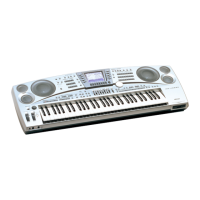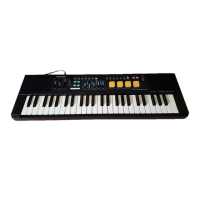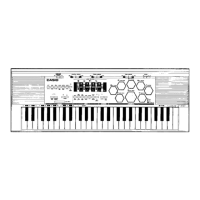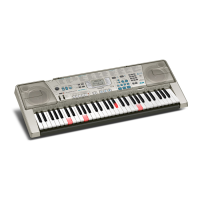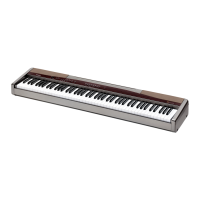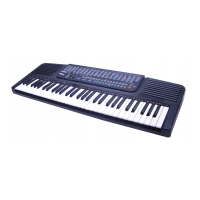Editing an Arpeggio
EN-43
7.
You can change the settings below.
• Touch a display item and then select from the list that appears. Use the 9 w/NO, q/YES buttons to change setting
values.
8.
After the settings of a particular step are the way you want, touch “r” in the lower right corner of the
screen to advance to the next step.
• To return to the previous step, touch “e”.
9.
After you are finished editing the arpeggio, touch bo EXIT to return to the ARPEGGIATOR EDIT
screen.
10.
Save the edited arpeggio using the procedure under “To save an edited arpeggio” (page EN-45).
Item Description Setting
Type Starting from the lowest note of the keyboard keys that are pressed (Low 1) as the basis,
specifies which note (1 through 8) should sound.
• If the specified value is greater than the number of keyboard keys pressed, the
corresponding note is sounded one octave higher. For example, if Low 4 is specified
when only three keyboard keys were pressed, the note that is one octave above Low 1
will sound.
• After one octave, the corresponding note will return to the original octave.
Low 1 to Low 8
Starting from the highest note of the keyboard keys that are pressed (High 1) as the basis,
specifies which note (1 through 8) should sound.
• If the specified value is greater than the number of keyboard keys pressed, the
corresponding note is sounded one octave lower. For example, if High 4 is specified
when only three keyboard keys were pressed, the note that is one octave below High 1
will sound.
• After one octave, the corresponding note will return to the original octave.
High 1 to High 8
With the number of keyboard keys pressed being maximum polyphony, specifies how
many notes can sound simultaneously.
• If the number of keys pressed is less than the value specified here, the arpeggio is played
only up to the keys pressed.
Poly 2 to Poly 5
The step will not sound when “Off” is specified. Off
Specifying “Tie” extends the duration of the previous step by one step. It can be used to
extend the duration of notes.
• “Tie” cannot be selected for the first step (Step 01).
Tie
Note Specifies a shift of the note sounded, in semitone steps, from the notes of the keys played on
keyboard.
–24 to +24
Vel. Changes the velocity (volume level) of the keyboard keys that are pressed. –64 to +63
Control Specifies the Pan or Filter value selected by “Control Type” in step 4 under “To change an
arpeggio parameter setting” (page EN-44).
Pan: –64 to 63
Filter: 000 to 127
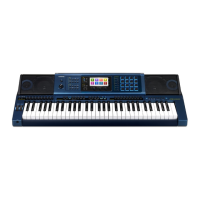
